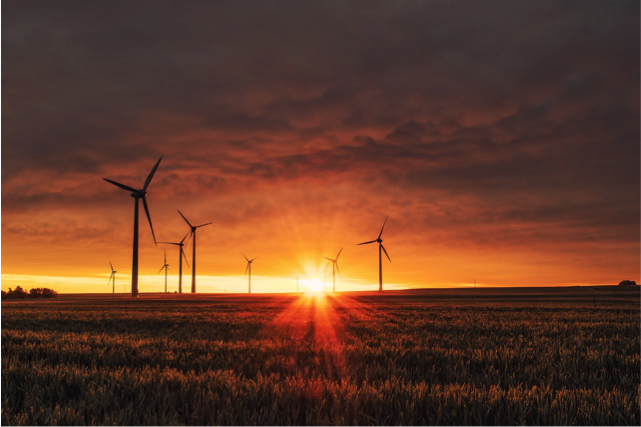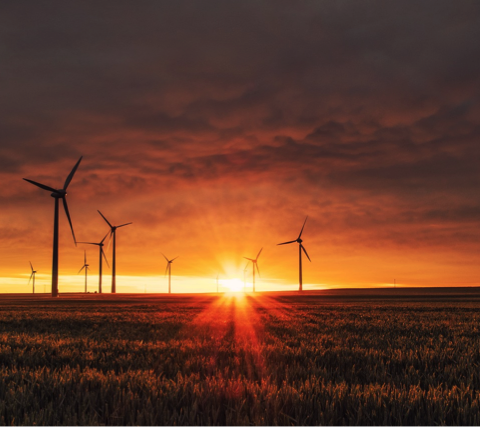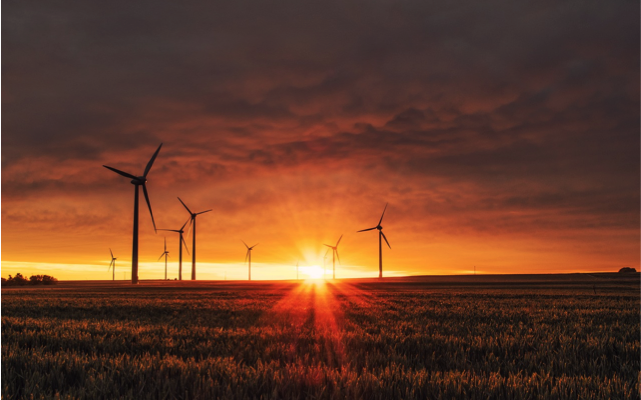 Wind turbines provide us with renewable energy that relies on nature, rather than fossil fuels, to reap the benefits. Yet, due to the height of the structures and location, wind turbines can attract lightning that result in fires, downtime and damaged electronics.
Wind turbines provide us with renewable energy that relies on nature, rather than fossil fuels, to reap the benefits. Yet, due to the height of the structures and location, wind turbines can attract lightning that result in fires, downtime and damaged electronics.
In order to fully gain the rewards of renewable energy produced by wind turbines, engineers must consider a lightning protection system to ward off hazards. Note that due to the height of a wind turbine, proper design and integrity of a grounding grid is imperative.
A wind turbine grounding system must meet the following three factors to be considered effective:
- Minimize the equipotential differences
- Provide sufficient ground reference potential to assure proper functionality and to protect electrical equipment
- Effectively dissipate lightning energy
Continue reading below to learn about five types of products that help facilitate optimal lightning protection for your wind turbines.
1. Blade Lightning Protection Systems
With the tips of blades reaching far above most structures around them, wind turbines are prone to lightning attachments. Capturing the stroke and safely transferring it to the ground without damage is critical to the entire turbine.
nVent ERICO’s GEN II lightning protection system offers engineers an innovative, fully insulated solution. The lightning protection system’s patent pending design offers a family of blade receptors that provide a smoothing of electric fields to eliminate the potential steamer initiation point. Learn more about nVent ERICO’s GEN II wind blade lighting system.
2. Connections
Engineers can depend on nVent ERICO Cadweld connections for ample wind turbine protection. Cadweld connections produce a molecular bond that is more effective than mechanical or compression-type connectors.
Cadweld connections provide current carrying capacities that are equal to that of the conductor and will not deteriorate over time. In addition, these connections satisfy the latest IEEE Standard for Permanent Connections Used in Substation Grounding requirements.
3. Ground Rods
The function of a ground rod is to dissipate lightning energy away from the wind turbine and into the earth. To successfully perform this process, engineers must select the best performing ground rods to protect wind turbines.
For wind turbine protection, copper-bonded ground rods are most commonly used. Copper-bonded rods are highly corrosion resistant and provide a long service life in a variety of soil conditions
4. Ground Enhancement Material
nVent ERICO Ground Enhancement Material (GEM) is the effective, maintenance free, permanent, easy to use, and environmentally sensitive solution to your toughest grounding problems. GEM is a low-resistance, non-corrosive, carbon-based superior conductive material that improves grounding effectiveness, especially in areas of poor conductivity such as rocky ground and sandy soil.
GEM contains portland cement, which sets within three days and fully cures within 28 days to become a highly conductive cementitious ground backfill that performs in all soil conditions irrespective of the presence of water. GEM maintains a constant level of performance once cured that will not diminish over the life of the grounding system GEM comes in easy to use 25-pound (11.3 kg) bags or buckets that one person can install. GEM is maintenance free and will never leach or wash away.
5. Testers
nVent ERICO’s grounding testers are lightweight and portable, and are ideal for determining soil resistivity before the wind turbine’s ground system is installed. See nVent ERICO’s ground resistance testers here.
Ready to protect your wind turbine from the dangers associated with lightning strikes? View our full foundation grounding system video here, or download our wind power solutions guide for even more information on superior protection.
Photo credit: Pixabay, CC0 Public Domain


